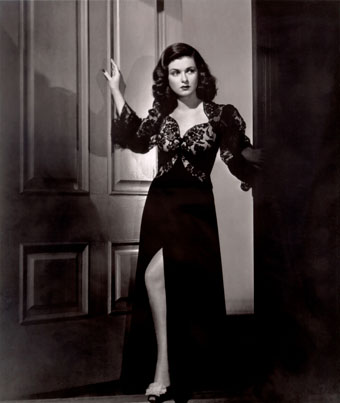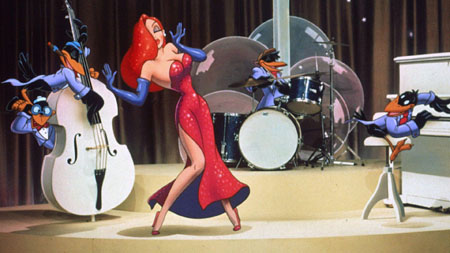The December issue of Cahiers du Cinéma is out with a special section on ten problems facing contemporary cinema—as well as the staff’s list of the top ten films of 2012. None of all that is online, but of course, since this is one of the earliest top tens of the year, it didn’t take long for a snapshot of the list to break out onto the wires. David Davidson‘s tweeted it, and just about everyone’s run with it.
In case you haven’t come across it yet, here we are, at your service.
1. Leos Carax’s Holy Motors; see Jesse Cataldo‘s review and roundups 1, 2, and 3.
2. David Cronenberg’s Cosmopolis.
3. Francis Ford Coppola’s Twixt (2011).
4. Abel Ferrara’s 4:44 Last Day on Earth (2011).
4. Hong Sang-soo’s In Another Country.
4. Jeff Nichols’s Take Shelter (2011).
7. Abel Ferrara’s Go Go Tales (2007).
8. Miguel Gomes‘s Tabu.
8. Aleksandr Sokurov‘s Faust (2011).
10. Ira Sachs’s Keep the Lights On.
Not only does the list pretty clearly reflect the magazine’s editorial point of view, it also reminds us that it takes a while, sometimes, for a film to make it over to Europe. At any rate, a happy 52nd to Leos Carax.
In other news. It may well be just a matter of days until the Sundance Film Festival begins rolling out is lineup for the 2013 edition (January 17 through 27). I’ve mentioned Ioncinema‘s predictions but have to again because the number of them’s hit 70. Meantime, Indiewire has presented a “Wishlist,” writing up 25 titles its writers are hoping to see in Park City.
Reading. “Samuel Fuller would have been 100 this year.” Cullen Gallagher introduces a new week-long feature at Not Coming to a Theater Near You: “Throughout his long and exciting life, Fuller was a modern day factotum. Reporter. Novelist. Soldier. Devoted father and husband. Actor. Runway model. Filmmaker. And while his first and last movie industry credits were as a screenwriter (1936’s Hats Off and 1994’s Girls in Prison, respectively), Fuller is best remembered for his work as a director. Films like Pickup on South Street (1953), Shock Corridor (1963), The Naked Kiss (1964), and The Big Red One (1980) are bona fide classics. Over the years, Fuller’s reputation has changed from industry outsider to something of an icon amongst filmmakers and moviegoers alike.”
Joan Bennett “was Lang’s favorite American actress, and you can imagine why,” writes Michael Atkinson at Sundance NOW. “In the cold and endless chess game of the Lang universe, Bennett was a perfect Queen, born and raised in battle, always on the defensive, neither just a maneater nor victim but a woman in the midst of being both, on her way to whatever dire fate the patriarchal system has in store for her. They never made ludicrous, conspiracy-infected crime serials like Lang’s Spiders or Feuillade‘s Les Vampires in Hollywood after the war, but if they had, Bennett would’ve made an awesome arch-criminal-slash-gang empress—no other Hollywood star could’ve evoked as profound a cocktail of woundedness and remorseless danger.”
Books. Margaret Moser talks with Sam Staggs about Inventing Elsa Maxwell: How an Irrepressible Nobody Conquered High Society, Hollywood, the Press, and the World, which focuses on “the Iowa-born, small-town girl who transformed herself into the most sought-after hostess at a time when such an art counted.” Also in Austin Chronicle, Kimberley Jones offers capsule reviews of five more new and film-related volumes.
DVD/Blu-ray. Reviewing Pasolini‘s Trilogy of Life at Slant, Joseph Jon Lanthier argues that the sum total of The Decameron (1971), The Canterbury Tales (1972), and Arabian Nights (1974) “isn’t ‘life’ so much as Pasolini’s argument for living, a manifesto juxtaposing crude impulse with inescapable destiny, and animalistic anomie with Christian benevolence. And to those who believe that the corporeal and the spiritual are as hopelessly incompatible with one another as free will and predestination, Pasolini offers miracles that intertwine all four.”
New York. Budd Wilkins at the House Next Door: “The Discreet Charm of the Bourgeoisie, Luis Buñuel‘s caustic comedy of middle-class mores, is arguably the Spanish surrealist’s most accessible late-period masterwork, consistently amusing in its champagne-dry wit, even if it’s never quite as trenchant in its autopsy of bourgeois complacency as, for instance, That Obscure Object of Desire. Buñuel and scriptwriter Jean-Claude Carrière supply the film’s stellar cast (a veritable rogues’ gallery of French art-house cinema) with an inexhaustible menu of absurd situations to overcome if they ever hope to complete their quixotic quest: assemble in one place, at the same time, over a common repast. Terrorist plots, police raids, the military on maneuvers, everything conspires to work against them. Frustration and disruption prove their native condition. Consider this peripatetic posse, wandering aimlessly down the road to nowhere, ‘six characters in search of a decent meal’ (to paraphrase Pirandello).” On its 40th anniversary, Bourgeoisie screens at the Film Society of Lincoln Center for one week beginning tomorrow.
Legendary animator Chuck Jones would have turned 100 this year, and to celebrate, BAMcinématek’s presenting Chuck Amuck, a four-day program opening tomorrow. Besides three programs of short classics such as What’s Opera, Doc? (1957), there’ll be, as Nick Pinkerton notes in the Voice, “a selection of features displaying Jones’s influence, obviously and less so. Onetime Godard affiliate Jean-Pierre Gorin’s delightful 1986 Routine Pleasures, dedicated to Jones, visits with the Pacific Beach and Western club of model-train enthusiasts and critic/painter Manny Farber—obsessive creators of imagined landscapes that owe much to Jones’s deserts.” See Elina Mishuris in the L for more on that one.
Back to Nick Pinkerton: “A curious mix of knockabout comedy and Robert Towne conspiracy—’Forget it, Jake, it’s Toontown’—Robert Zemeckis’s Who Framed Roger Rabbit homages the ‘duck season! rabbit season!’ routine from Jones’s Daffy and Bugs shorts, among much else. It made a star of Kathleen Turner–voiced Jessica Rabbit, with Cyd Charisse legs, Veronica Lake peekaboo hair, and a bosom never seen on this planet; less so the grating title character.” More from Joseph Jon Lanthier (L).
Nick Pinkerton: “An altogether more satisfying live-action-and-‘toon mash-up might be found in Joe Dante’s 2003 Looney Tunes: Back in Action“—more from Steve Macfarlane—”playing along with the rare sequel that outdoes the original, Dante’s 1990 Gremlins 2: The New Batch, which ransacks ’80s pop culture for satirical targets as thoroughly as Jones did the ’50s.” More from Benjamin Sutton.
As part of MoMA’s series Mapping Subjectivity: Experimentation in Arab Cinema from the 1960s to Now, Part III, Simone Fattal’s Autoportrait (1971/2012) screens Saturday afternoon. Kaelen Wilson-Goldie tells the story behind its making and explains why it’s one of the “glittering jewels” of the program.
“The Sorcerers (1967), the second of three, unusually ambitious horror films by Michael Reeves, the British director who died over a drug overdose at 25 shortly after the release of his minor classic, the Vincent Price vehicle Witchfinder General, gets a rare local screening this Friday as part of the Anthology Film Archives’ tribute to the Warner Archive Collection,” notes J. Hoberman at Artinfo…
Paris. … where he’s also posted another dispatch from the French capital: “A bit more than one year old, Silencio may no longer be the hottest (or the coolest) club in Paris, but David Lynch’s nouveau cave is definitely the most underground.” It’s also “far less menacing than it is mellow—at least that’s how it seemed the night that I dropped by around 11:30 pm, half an hour before the joint opens to non-members. The most Lynchian thing about the place was the exhibit of Todd Hido photographs illuminating the stairwell—spooky C-prints of abandoned middle American landscapes.”
Two related notes. Cinephilia & Beyond has collected links to half a zillion interviews with Lynch, while, at Transit, Andrés Duque presents a video essay on Lynch’s witches and their doubles:
David Lynch’s Witch Project from Banda TRANSIT on Vimeo.
For news and tips throughout the day every day, follow @KeyframeDaily on Twitter and/or the RSS feed. Get Keyframe Daily in your inbox by signing in at fandor.com/daily.






